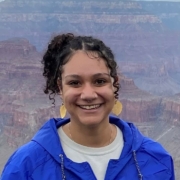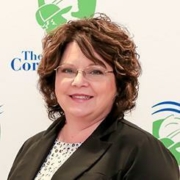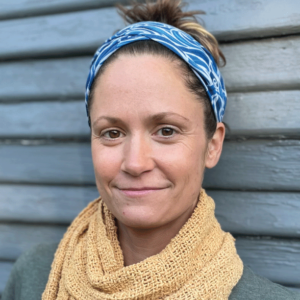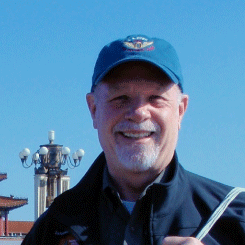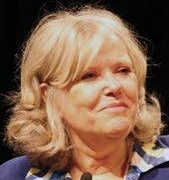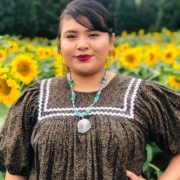Article, written by James J. Crumpler, III, appeared on the MCC Krew Blog on June 13, 2014.
We are very few. Six people, four crew members, myself included, and two crew leaders make us the smallest crew with the toughest assignments. We are the backcountry crew. This past assignment was based in Thunder Basin National Grasslands. Working alongside the United States Forest Service (USFS), we were told a little of the geography of the area and the nature of the nine day work period.
Thunder Basin, as the name would suggest, is a geographic depression. Towards the north are the Rochelle Hills, small buttes studded with short grasses and cactus with a flat top, and you follow those hills around to make a horse shoe shaped ridge of buttes and low mountains. These hills define Thunder Basin’s grasslands. The horse shoe of ridges stretches in a curve from the north to the southwest, maybe 12 miles from point to point, and everything in between are rolling hills, cactuses, short buffalo grasses, Pronghorn, rabbits, snakes and Prairie Dog holes covering the ground from the base of the ridges in the north to the far horizon in the southeast. However, many of those holes have been abandoned, which, as the USFS explained, was the reason for our presence.
Bubonic Plague, or Black Death, has scarred the European consciousness since it emerged in the 14th century. It still exists today, in various forms, and has recently decimated the Prairie Dog population in Thunder Basin. The Prairie Dog is a social animal; it lives and thrives in large, sprawling, underground communities, which makes any disease particularly virulent. In addition, the ecosystem of the plains is dependent on the Prairie Dog. It provides habitat and food for rattlesnakes, rabbits, and, in the turbulent world of conservation politics, will sustain the reintroduction of the endangered Black Footed Ferret in the region. Without a significant Prairie Dog population, such a reintroduction is politically impossible, and environmentally unsustainable.
Our job was to spray every Prairie Dog hole we found with Deltamethrin, a mild insecticide to kill the plague carrying fleas. It is delivered in a white chalky powder with a machine strapped around the shoulder that, when turned on, makes a loud “BZZZZZ” sound. So there we were, six people walking across the prairie within ten feet of each other spraying Prairie Dog holes. Every now and then, we would find a hole and reach down with a long pole to apply this powder with a machine that sounded like an angry hornet’s nest every time we turned it on. The powder would sometimes clog the machine and explode in a cloud all over us, making whoever was holding the machine a snowman in the middle of a semi-arid plain. It was a strange and laughable site, but soon the heat and dust of the day bore down on the workers again, and we trudged on. Sometimes it was difficult to see the point of the work, but we did it to the best of our ability and with as much enthusiasm as we could muster. The lack of enthusiasm was probably the result of too little shade and not enough water.
Water is the most precious thing on the plains. It was not unusual to go through 4 liters of water per person, per day, which comes to about one gallon of water. Whatever amount you can carry, is how much you will need. It was dry with a high breeze, so you did not feel the sweat trickle down your face, but you tasted the salt on your lips. Chapped lips, tasting of salt and grime, combined with packs and a machine strapped about the shoulders made for long days, with water being the only conciliatory drink of choice. Coffee was a luxury for the mornings and evenings, and water was the mainstay of long dusty days. Dehydration was the greatest internal threat, the greatest external threat were the rattlesnakes.
Prairie Dog holes provide habitat for snakes, both venomous and non-venomous. We saw so many snakes that it became a common, almost daily, joke to allude to references of “Snakes on a Plain” to slightly paraphrase the movie. Thirty Rattlesnakes, five Bull Snakes, two Hog-Nosed Snakes, and two Garter snakes were the final tallies of snakes in our nine-day work period. Snakes are cold-blooded; they use the environment to maintain their body temperature. If it is hot, they will seek the shade and burrow deep into Prairie Dog holes to escape the sun. The heat makes them sluggish and despondent, except when you are about to spray the hole they happen to residing in, then it is wise to move quickly out of the way. When it is cooler, with cloud cover, they are active. The best working conditions for people also are the best working conditions for snakes. It became a kind of bleak, humor-less game to see how many rattlesnakes we would find on cool days. Not on purpose, of course, but snakes were a concern that we were all too aware of on the plain. Nerves become much tighter after seeing three rattlesnakes in as many minutes.
The best moments were after the days were ended. We would pile into our rig that is named Stella, and drive back to camp. A slight break period comes first. It was during such periods that folks switched from their progressively dirtier work clothes into something cool and soothing…slippers, shorts, t-shirts, anything and everything that was comfortable. Some would massage their feet, others would take a nap, and still more would simply lie down and contemplate. Relaxation was different for everyone, but everyone pretty much kept to him or herself. Dinner broke the lull. Food and fire were the mainstays of the evening. Two people would work on the meal, two more would collect firewood to build a fire, and the other two would dread cleaning up after dinner…or at least that is what went through my mind. Fire tended to be a salve to the wounds and nerves of the day. After dinner and cleanup, we would gather around the fire to shake the dust off our minds from the day. We told stories, and yarned about the past and the present and the future. It was a time to laugh. We were hyper-critical and hyper-sympathetic towards each other. One by one we would tell our tales, and one memorable evening it stole into my mind to sing Italian Opera…there were some strange evenings.
All told we sprayed about 29,000+ holes, a new record. The previous record was something like 16-18,000. Very few things can drive a crew to better performance than competition. We did 29,000, a high mark, and one that, if we are lucky, will hold for the remainder of the summer. If not, then another crew will have the honor of saving more Prairie Dogs. It is a strange honor to possess, but we are proud of the work we do. Sometimes, saving those little dogs on the prairie is the best work a person can accomplish.







